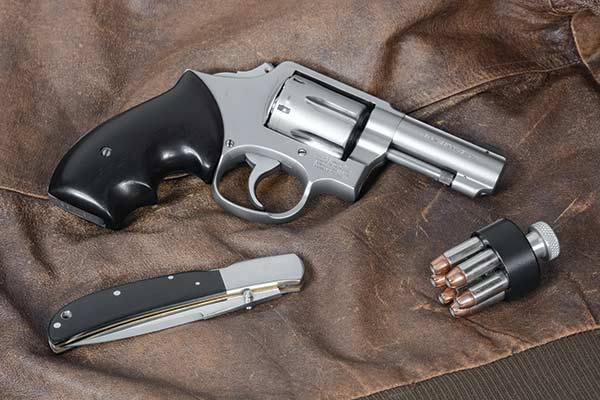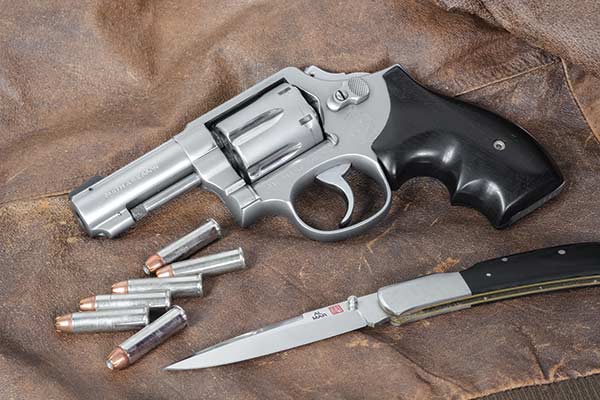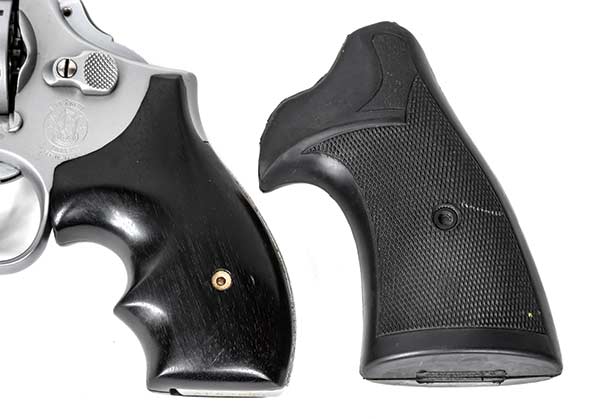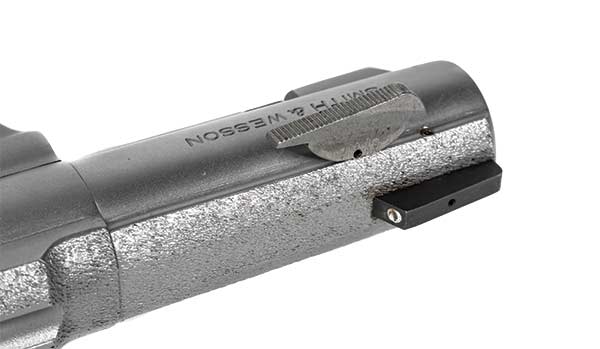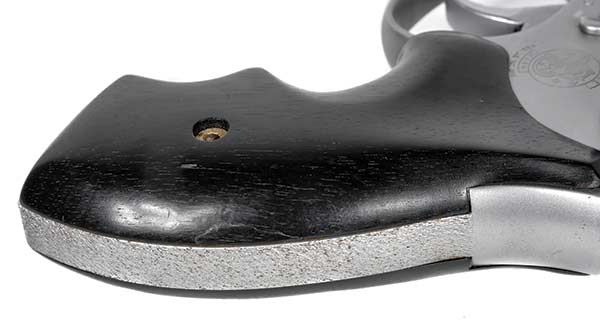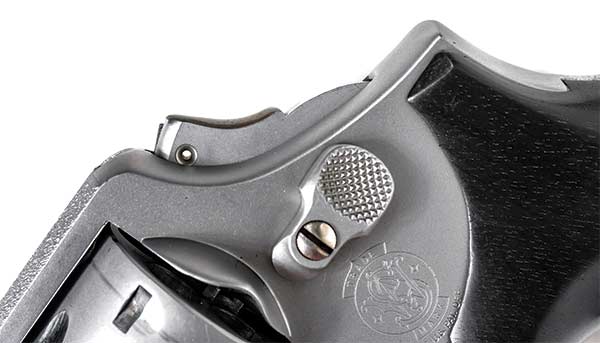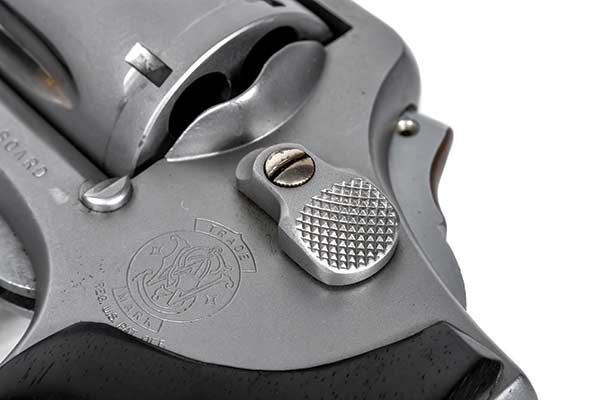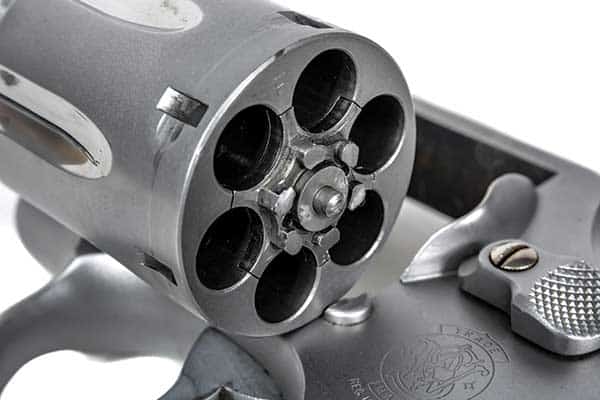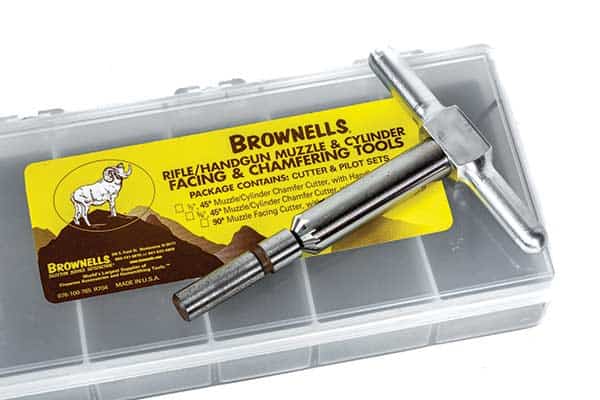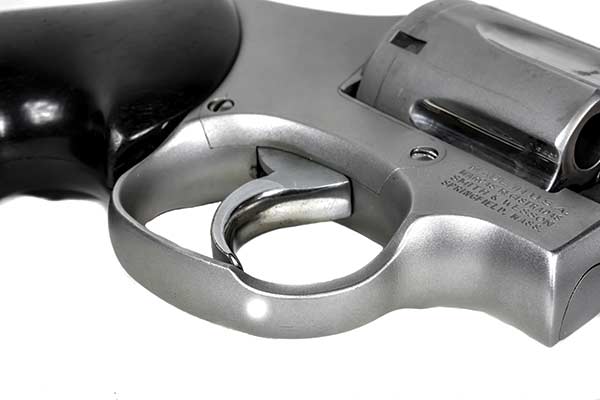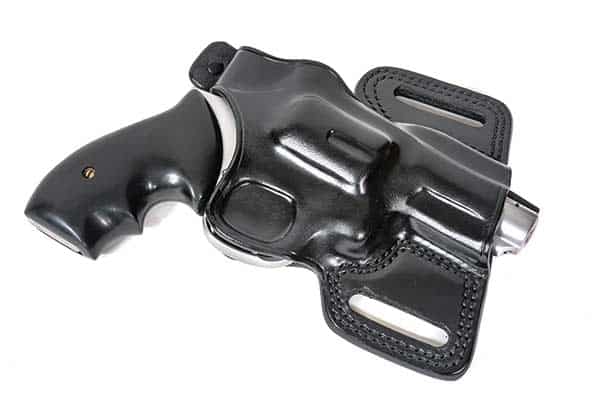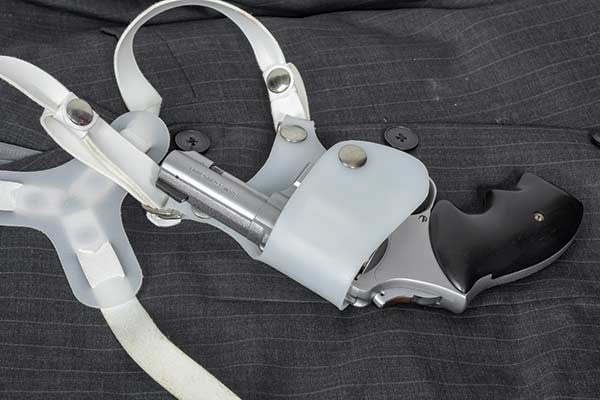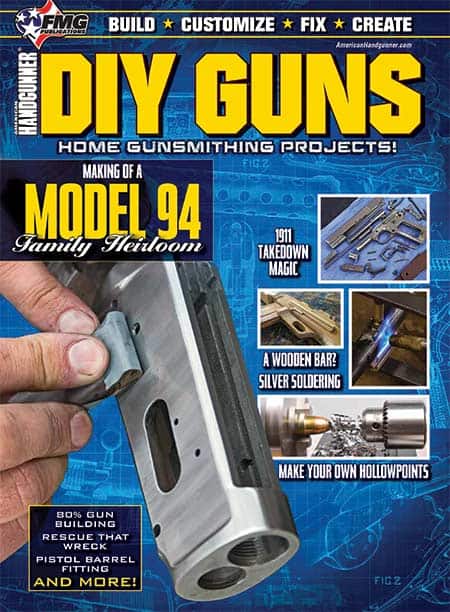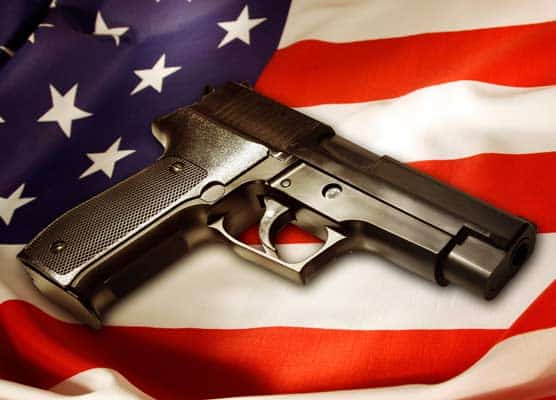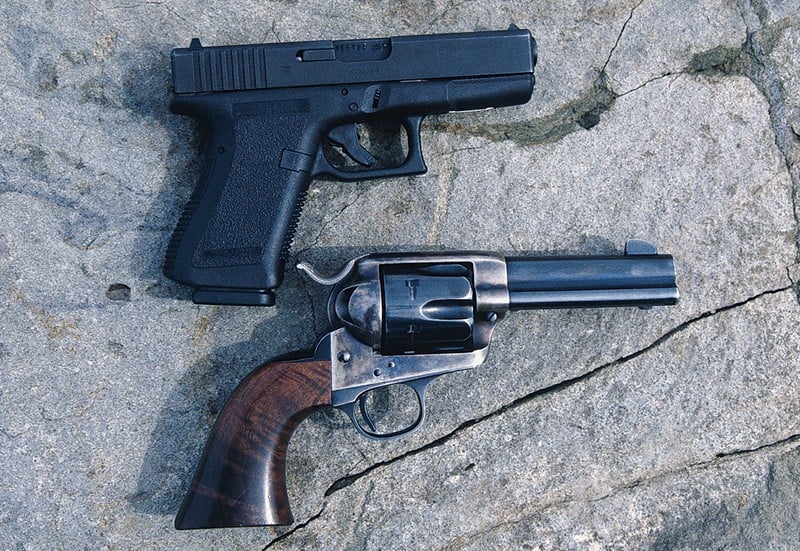On Your Guard
Convert an S&W 65 Into a Half-Fitz Carry Gun
There are some ideas from the past so timeless they should be brought into the future. And there are some that aren’t. The Fitz Special revolver contains a bit of both. Originally built from large-frame .450-caliber Colt revolvers (J. Henry Fitzgerald did, after all, work for Colt), a Fitz conversion consisted of lopping the barrel off to snubnose dimensions, shortening the butt to make the gun more concealable and removing the spur from the hammer to keep the gun from snagging while being drawn from a pocket. The trigger guard was completely cut away from the front all the way back to the tip of the trigger to make it faster to fire. A purposeful look, no doubt, but no less dangerous.
Basic Mods
The gun came from Adventure Outdoors in Smyrna, Georgia with Pachmayr rubber grips and an excellent trigger pull, so I left the mechanics of the gun alone, which is a good policy in many cases. I did, however, bob the hammer using a Dremel cutoff wheel, then used a grinder to reshape the rear of the hammer and remove any sharp edges. I made a point, however, of leaving the “shelf” at the base of the hammer spur, which serves as a stop to keep the hammer from being over-cocked. There was nothing wrong with the Pachmayrs on the gun, but I’m not a fan of rubber grips on carry guns so I replaced them with a set of smooth ebony Secret Service grips from
Eagle Grips.
Since I performed the work at Novak’s .45 Shop, where I was trained as a gunsmith, I also matted both the exposed rear of the grip strap and the top of the receiver and barrel. Matting is a hand-applied texturing process popularized by pistolsmith Armand Swenson, who taught it to Wayne Novak, who, in turn, taught me. On the top of the gun, it may reduce glare, but is largely cosmetic. Applied to gripping surfaces, though, it gives the gun more purchase without the sharpness of checkering.
Silver-colored front sights such as the originals on the 65 are generally a bad idea because they tend to disappear in sunlight. I drove out the tightly fitting 1⁄16″ crosspin holding the serrated ramp front sight in place and then installed the first of two different front sights in its place. The first was a blank I used to sight the gun in at 25 yards with 158-grain jacketed hollow-point ammunition. Once we knew the correct height, Novak’s made a 0.125″ wide black front sight with a tritium dot insert giving much better visibility in both light and dark conditions.
Carry guns should be free of sharp corners, so I removed the sharp edges from the gun (including the front of the cylinder), which I typically do using a fine file followed by sandpaper and possibly an abrasive wheel. As a word of warning, though, it takes a fair amount of skill to keep the wheel from getting ahead of you.
Among the sharp edges I removed were those around the mouths of the chambers. I used a chamfering tool from Brownells to cut a slight bevel on the entrance of each cylinder to make it faster to reload, without going deep enough to weaken the cylinder. The tool, available for several bore sizes, consists of an angled cutter (I chose 45 degrees) and removable pilot as well as a screw-on aluminum T-handle. I opted to leave the surface of the ejector star somewhat sharper than the chambers to ensure positive extraction.
Safety vs. Speed
This brings us to the trigger guard, a huge part of the look of the Fitz and its storied place in American pistolero history. Col. Rex Applegate carried a cutaway Fitz, and legendary Texas Ranger M.T. “Lone Wolf” Gonzaullas was known to carry cocked M1911 pistols with cutaway guards. There are also more than a few Colt SAAs without intact guards.
All that aside, safety requires a pistol to have a trigger guard — both to avoid negligent discharge and because the short stub of a guard can get bent behind the trigger, preventing the gun from firing at all. Chic Gaylord, along with fellow holster maker Paris Theodore and Charley Kelsey (of ASP and Devel fame, respectively), seeking a safe way to achieve the same speed advantage, all arrived at the idea of narrowing the guards on their guns, often only on one side. Having handled many pistols with modified guards, including an ASP, quite a few Devels, and Applegate’s original Fitz, the narrowed approach, called a “half-Fitz,” makes the most sense to me.
Cutting The Half-Fitz
Since I’m right-handed, after marking a line down the length of the guard, I used a bench grinder to narrow it on the right side, then cleaned it up with a file and fine abrasive wheel, beveling the newly created sharp corner as part of the modification. At the same time, I smoothed and polished the face of the trigger.
After all this hammering and sawing, obviously the original finish had not survived in factory form. Rather than repolish the gun (it is, after all, a carry pistol) I completely disassembled it and bead blasted all exposed metal parts to give it a soft, even silver finish. After blasting, to add just a touch of flash, I used a felt bob and white polishing compound to bring the cylinder flutes to a hard shine. This turned out to be one of the harder parts of the job: As the flutes get shallower toward the rear, the polishing wheel tends to jump out of the flute and leave a track mark across the cylinder. I got to reblast the cylinder and start again more than once.
I’ve put well over a thousand rounds through the gun since finishing the build. It averages under 2″ at 25 yards from the Ransom Rest, using mostly hollowpoints.
Hornady XTP loads averaged about 1 3⁄4″ at 25 yards, and shoved both 140- and 158-grain XTPs out at a solid 1,090 fps or so, and the 158s are my choice for carry ammo. With the smooth trigger and easily visible front sight, it also shoots very well by hand. You won’t enjoy shooting too many boxes of full-power Magnum at a time, but shooting .38 Special handloads is quite pleasant.
For more info:
AdventureOutdoors.us
Brownells.com
EagleGrips.com
GalcoGunleather.com
KLNullHolsters.com
NovakSights.com

